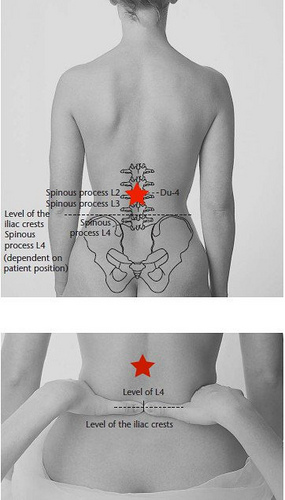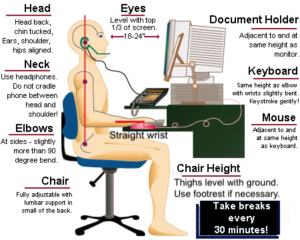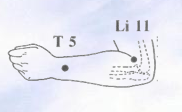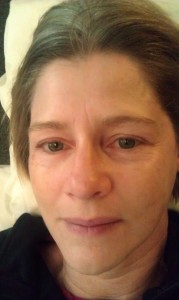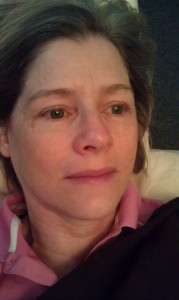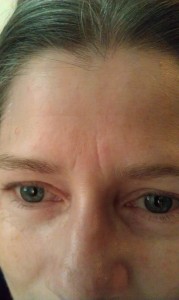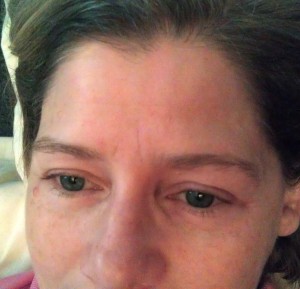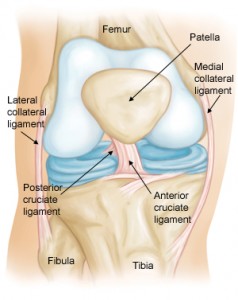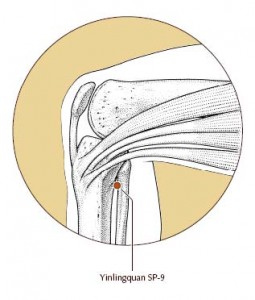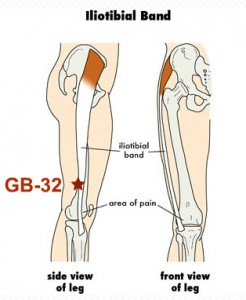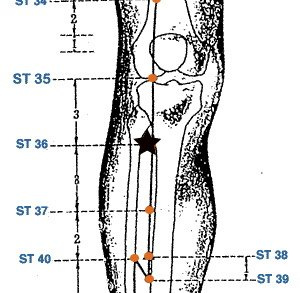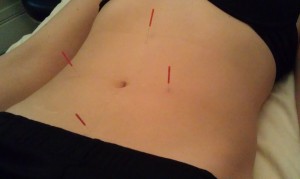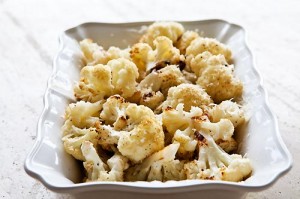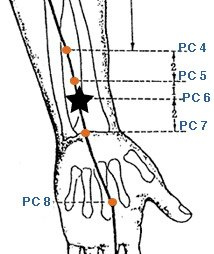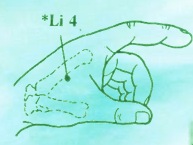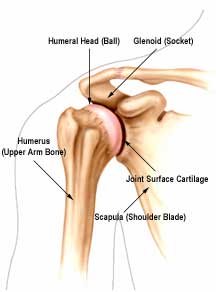
Anterior (front) view of the bones of the shoulder joint.
We can do amazing things with our arms. Lift them overhead, cross our chests, even link our hands at our spines. In fact, the shoulder is the most mobile joint in our bodies, thanks to its “ball and socket” configuration. See how the head of the humerus (upper arm bone) fits into the scapula (that triangular bone in your upper back) like a baseball into a glove? It can spin on the smooth, round surface to provide a spectacular range of motion.
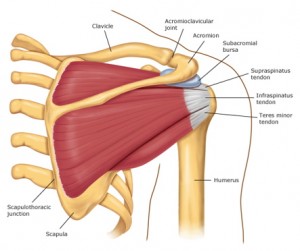
The posterior (back) view of the shoulder.
Just as with national politics, there’s a trade-off between freedom and stability. The complexity of this joint makes it prone to a variety of injuries. Cartilage lines the articulating joint surfaces to create a smooth track for movement. If torn, it takes a long time to heal and may require surgery. There’s the bursa, a fluid-filled sac that provides cushioning. Inflammation here, called bursitis, can be very painful. Rest, ice, anti-inflammatory drugs, and acupuncture are the best treatments (of course an anti-inflammatory diet will help, too). The well-known rotator cuff is actually a set of four deep muscles that stabilize the joint and work to rotate the humerus. Three (supraspinatus, infraspinatus, and teres minor) can be seen in the drawing of the back view of the shoulder. The fourth, subscapularis, attaches to the front of the scapula and goes to the front of the humerus and the joint capsule. With a minor tear, they will require rest and then specialized exercises. Severe tears require surgical intervention.
Overtop the rotator cuff is a layer of larger muscles, such as the latissimus dorsi & teres major (back), and the pectoralis muscles (front), and the deltoid (that roundy bit at the corner). These are your heavy duty movers. Ironically, since the lats and pecs both attach to the front of the humerus, unbalanced exercising can lead to an internally rotated (palms towards the back) shoulder, or “ape” posture. This is a great example of the importance of an intelligent, balanced workout plan. Then of course there are all the muscles that continue down the arm to control the elbow, including the triceps and biceps.*
If any of these muscles are dysfunctional, the bursa is irritated, or the cartilage is torn, you can have shoulder pain and loss of range of motion. Connective tissue can adhere, and scar tissue builds up over time. In extreme cases, you can develop Frozen Shoulder, which is exactly what it sounds like. It just won’t move. There are other causes of shoulder pain, too, ranging from nerves being pinched at the neck to gallbladder disease, but these musculoskeletal problems are the most common.
Acupuncture can reduce inflammation, increase bloodflow, relax tight muscles, and speed healing. I can also perform Osteopathic medical massage to break up scar tissue, release myofascial adhesions, and retrain the neurological system. This allows chronically tight muscles to return to normal. In most cases, therapeutic exercise is important for complete healing.
*Please note that I’m simplifying the anatomy quite a bit for the purposes of this article. If you’re interested in all the marvelous details of our bodies, I highly recommend Netter’s Atlas.

